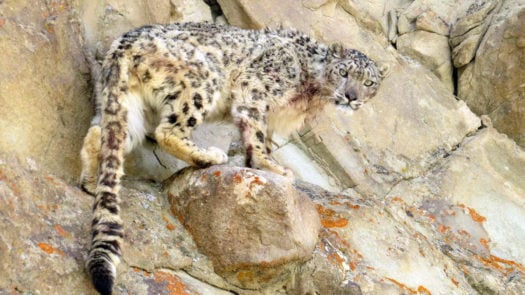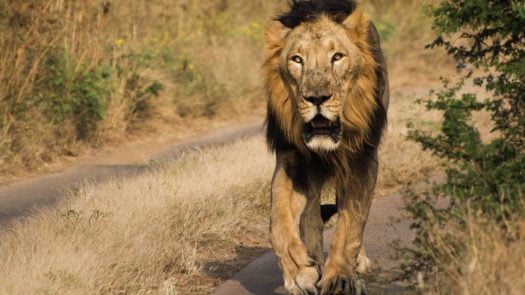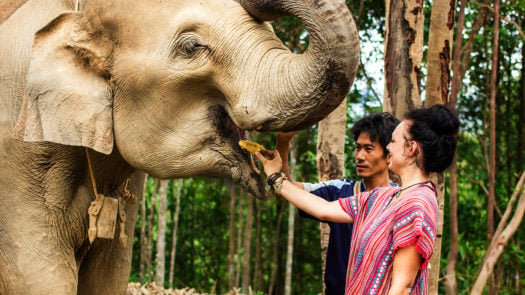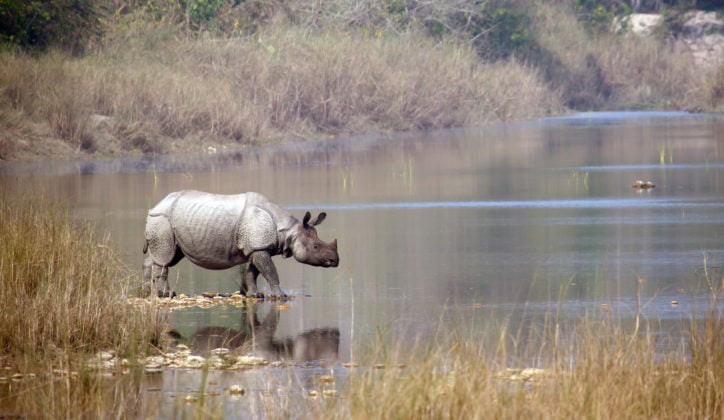Published on: March 1st, 2019
Last updated: July 27th, 2023
Asia is a vast and incredibly diverse continent with a variety of wildlife to match.
From visiting rescued orangutans in Borneo to tracking tigers in India, there are plenty of wildlife-focused activities on offer in Asia.
To help you make the most of wildlife spotting opportunities on your next trip, this is our experts’ guide to wildlife in Asia.
Diving hotspots
Southeast Asia is awash with diving hotspots, each giving travellers the opportunity to get up close to the incredible marine life endemic to this region. Some of the best diving to be found is in Indonesia, where the surrounding waters are teeming with marine life. This collection of over 17,000 islands is home to one of the world’s best diving destinations, Raja Ampat. An astounding variety of coral and marine species can be found here; a report published by Conservation International suggests that Raja Ampat is home to one of the highest recorded numbers of marine species in the world. From manta rays to hawksbill sea turtles, there’s an incredible amount of marine life to discover here.
For off the beaten track diving, Indonesia’s smaller islands offer unforgettable experiences. Muck diving – a type of diving that gets its name from the muddy sediment at the bottom of the ocean – is best in places like Ambon or Lembeh. In Ambon, there’s a decent chance of spotting lesser known critters such as psychedelic frogfish, rhinopias and scorpionfish. As Ambon sits on the Ring of Fire, there’s also a world of incredible underwater volcanoes to explore. Lembeh is recognised as the place to go for world-class muck diving, best known for its weird and wonderful macro sea life. Here, interesting critters such as hairy frogfish, bumblebee shrimp and the intriguing mimic octopus are just some of the incredible sea creatures to discover.
Incredible birdlife
From the seas to the skies, Asia is filled with diverse wildlife. In untouched Borneo, there’s an incredible array of bird life flying over the verdant landscapes below. This bio-diverse country boasts an incredible 750 bird species, 40 of which are endemic to Borneo. Sabah, the Malaysian state of northern Borneo, is one of the nation’s wildlife hotspots and the perfect place for birdwatching enthusiasts. 622 bird species call this region home, and there are different spots across the country that cater to whatever type of birdwatcher you are.
Not far from Sabah’s capital Kota Kinabalu, the UNESCO World Heritage Kinabalu Park is home to a significant variety of the island’s endemic bird species. Covering a staggering 75,000 hectares, the differing environments – ranging from lowland forest to sub-alpine terrain – in this stunning national park create the ideal environment for 17 endemic bird species. To spot the elusive Banded Broadbill, head to the Poring Hot Springs and the Langanan waterfall.
In Nepal, the Royal Chitwan National Park lives up to its name, which directly translates to ‘Heart of the Jungle.’ Nestled in southern Nepal in the Terai lowlands, the tropical forest here houses over 500 bird species. The birds to be found here are mainly birds of prey, with species including majestic honey buzzards and ethereal darters. Most lodges on the periphery of Chitwan organise walking safaris and bird watching trips. Led by experienced naturalists, these excursions give travellers an unrivalled insight into the protected habitats and birdlife of the region.
Where to see Big Cats
On the Indian Subcontinent, there are endless opportunities to spot Asia’s famed big cats. In India, Bengal tigers can be found wandering the tracks of Bandhavgarh National Park, Ranthambore National Park and Kanha Tiger Reserve. Bandhavgarh has been a tiger-friendly environment for centuries, with the forests long maintained as a preserve for Maharajas and their guests.
With its tiger population brought back from the brink of extinction at the end of the last century, Ranthambore is now filled with tigers. Tigers wander through ancient temple ruins, and the atmosphere feels truly magical here. Kanha Tiger Reserve is understandably regarded as one of the best parks in India for tiger safaris, with the majestic cats dominating this dense jungle.
In India’s picturesque northern region of Ladakh, snow capped mountains and vast barren plateaus make for excellent snow leopard spotting. The only wildlife dedicated lodge in Ladakh – Snow Leopard Lodge – truly lives up to its name, and is a worthwhile stop for any wildlife enthusiast. Generally, travellers on snow leopard excursions head out at the crack of dawn to search for signs of the feline. Based on the mornings finding’s, the chief spotter will then lay out a plan for the day ahead over a hearty breakfast. Sightings of the majestic snow leopard are by no means guaranteed, but incredible landscapes and the thrill of the chase make it a unique experience regardless of whether the cats make an appearance.
To spot Asiatic lions, head to India’s Gir Forest National Park. Located in the western state of Gujarat, this protected area is the last remaining stronghold of the Asiatic lion. Asiatic lions were hunted down to a population of just 20 during the early 20th century, so protected strongholds like Gir Forest remain as important as ever. Conservation efforts within Gir Forest National Park and surrounding sanctuaries in recent years have brought the number of Asiatic lions back up from 20 to an impressive 650. As well as lions, there’s also the opportunity to spot tigers, leopards, striped hyenas and jungle cats in Gir Forest National Park, so you’re spoilt for choice.
Majestic mammals
Perhaps one of Asia’s most admired mammals is the elephant, and Thailand is a renowned place to go for animal encounters when it comes to elephants. At Jacada, we believe in interacting with elephants responsibly, and there are plenty of ways to do so when you know which elephant sanctuaries offer the real deal. It’s often difficult to tell which sanctuaries are treating elephants humanely, but our expert travel designers have recommended Chiang Rai’s Elephant Valley.
This sanctuary allows travellers to walk through forest alongside the elephants, help out at bathtime or enjoy a picnic with these gentle giants. Visitors will also learn about elephant biology, behaviour and conservation from the local guides who live and work here. By putting the needs of the animals first, Elephant Valley creates an elephant experience that benefits both the animals and those who visit them.
Elephants also take centre stage in Sri Lanka, where the annual Minneriya Elephant Gathering draws travellers from around the world. A unique phenomenon that takes place during the dry season (from May to October), this gathering sees Minneriya National Park play host to the largest assembling of Asian elephants at any given time across the world. Herds from all over Sri Lanka’s North Central Province head here to enjoy the fresh green grass and bathe in waters surrounded by wetlands, grasslands and scrub jungle. Witnessing the elephants enjoying their natural habitat is an experience that few things compare to.
The weird and wonderful
Dugongs
From dugongs to komodo dragons, Asia is filled with weird and wonderful animals that can only be found in this part of the world. Dugongs – rare marine mammals – are one of the most eclectic mammals to be found in Southeast Asia. Related to manatees, dugongs are similar in appearance and behaviour and even distantly related to the elephant. This combination makes for a mammoth creature that looks somewhat like a cross between a whale and an elephant.
Don’t be fooled by their size though, as dugongs are vegetarian gentle giants that spend their days grazing on underwater grasses. Once an easy target for coastal hunters, dugongs still remain a vulnerable species today. One of the best places in Southeast Asia to see dugongs is in the waters surrounding Vietnam’s Con Dao. One of 16 islands in a protected marine archipelago, Con Dao is fringed with white sand beaches merging into turquoise waters that house the ever elusive dugong.
Komodo dragons
In Indonesia, the aptly named Komodo National Park is a UNESCO World Heritage Site made up of three main islands – Komodo, Rinca and Padar – and the waters that separate them. Most people make the journey to Komodo National Park to see its famous inhabitants, the komodo dragons. These fearsome creatures look as though they’ve stepped straight out of the Jurassic period, with their dinosaur-like features and menacing demeanour. Sightings of the indigenous komodo dragons aren’t guaranteed, but travellers intent on spotting these wonderful predators are likely to be rewarded. For the best chance of spotting a Komodo dragon, we recommend cruising the Komodo Islands on one of our luxury private vessels, with opportunities to explore both life on land and underwater.
Spectacled langurs
Dusky leaf monkeys, or spectacled langurs, are found in both Malaysia and Thailand. Although Borneo is known for its orangutans, it’s also a great place to spot these endearing creatures. Coated in tufts of grey and brown hair with light patches around the eyes and mouth, these animals look as though they are constantly surprised. These vegetarian creatures spend their days grazing mostly on leaves, seeds, fruit and flowers. The number of these monkeys has declined at a rate of 30% over the past 30 years, so spectacled langurs are almost recognised as a vulnerable species. The main threats to these adorable animals are farming and increased human settlement, so Borneo’s protected rainforests provide a necessary habitat for these mammals.
Discover Asia's wonderful wildlife
Feeling inspired? Our expert travel designers are always on hand to help you plan your next trip to see Asia's wonderful wildlife.


























